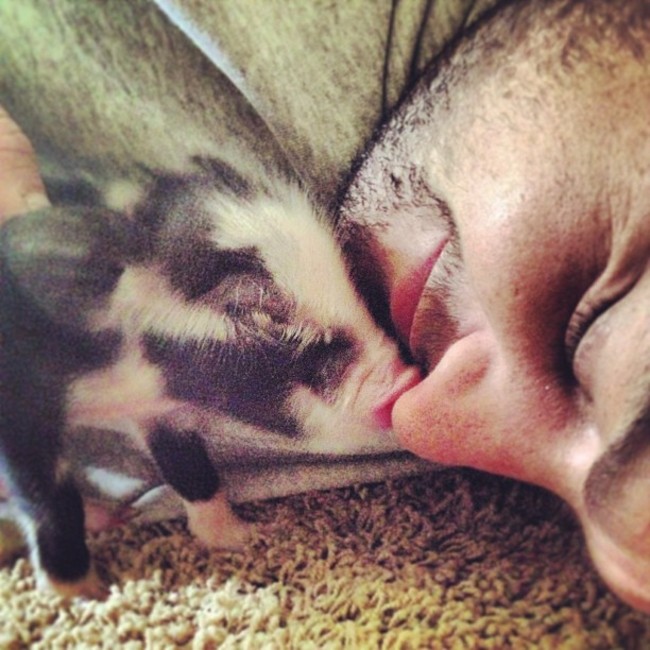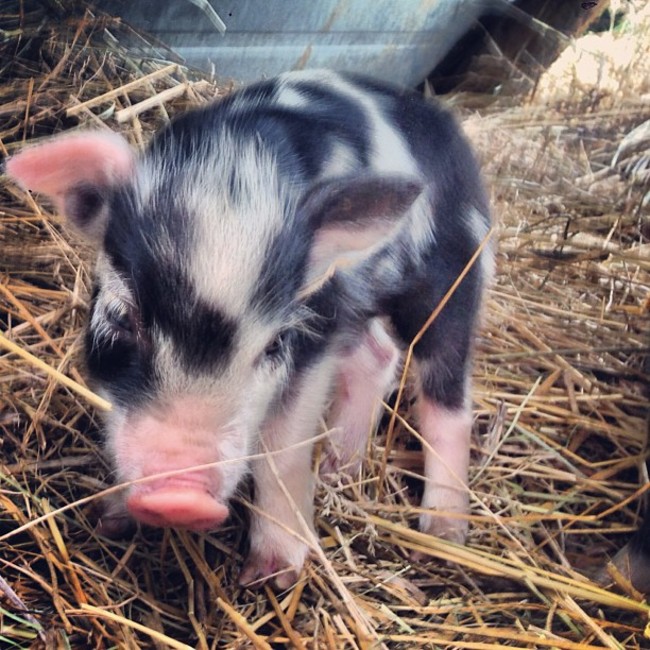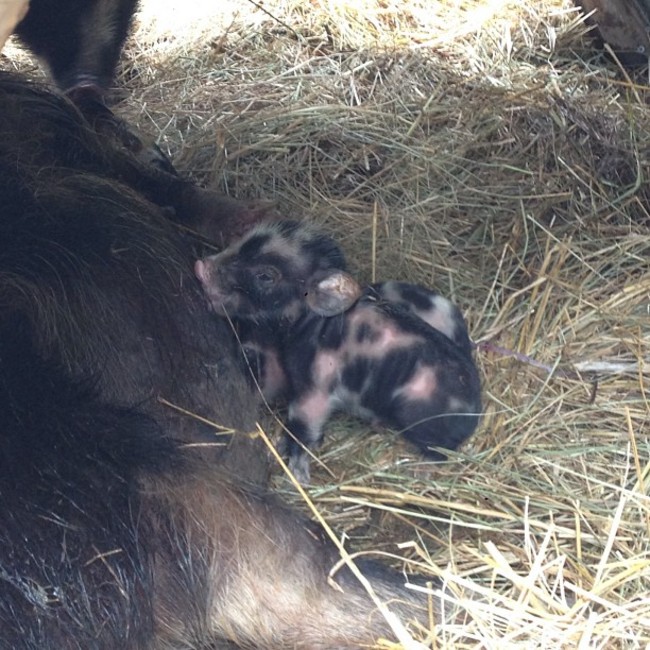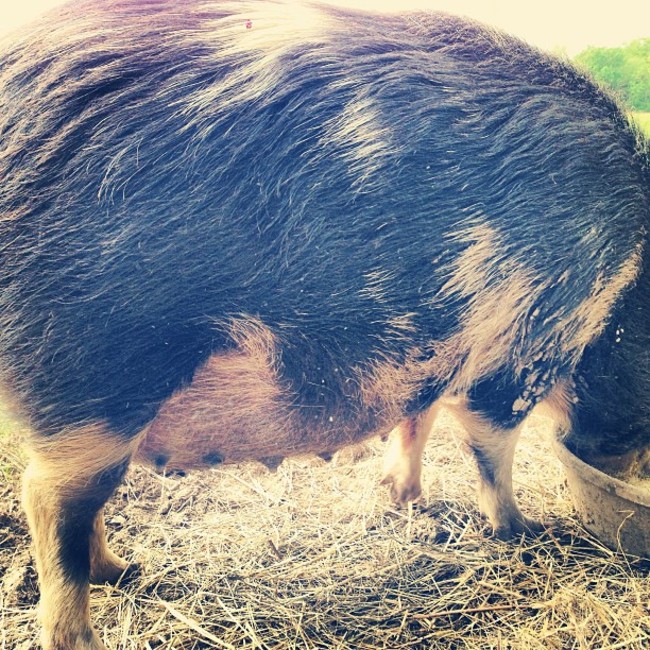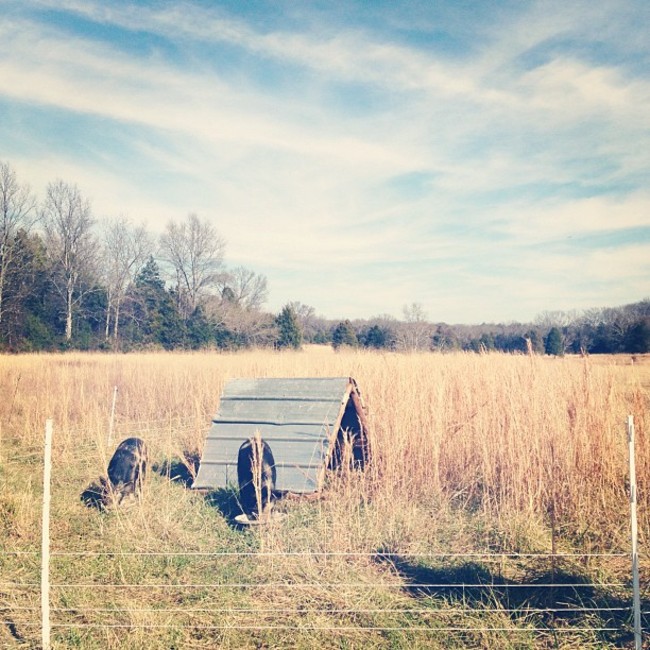On Saturday I wrote about Bianca's farrowing and the fact that one of the piglets didn't survive. I learned from the piglet's death that piglets are extremely fragile when first born, highly susceptible to cold, and if not immediately cared for will most likely expire through no fault of their own.
I wrote Saturday's post in a kind of stream of consciousness. It helped a lot to get it out on paper and force me to think about it. Immediately after I published the post I went back out to check on Bianca, who was still laboring and was expected to birth another 4-5 piglets over the course of the next hour or so. I wanted to bring more hay and food for her, and to check on the rest of the piglets to see if any of them needed help.
Eileen had yet to see the piglets, so we jumped on the ATV and headed out to their paddock. First thing we saw upon arriving was a lone piglet covered in afterbirth under a tree. Bianca was with the rest of the litter in her nest. Five piglets were with Bianca. We knew that little piglet under the tree didn't stand a chance on its own and it was already on the brink of death, most likely unable to survive if we simply placed it back in the nest, as I had done with the last one.
So we took her inside and gave our best shot at nursing her back to health.
Here is what I learned:

